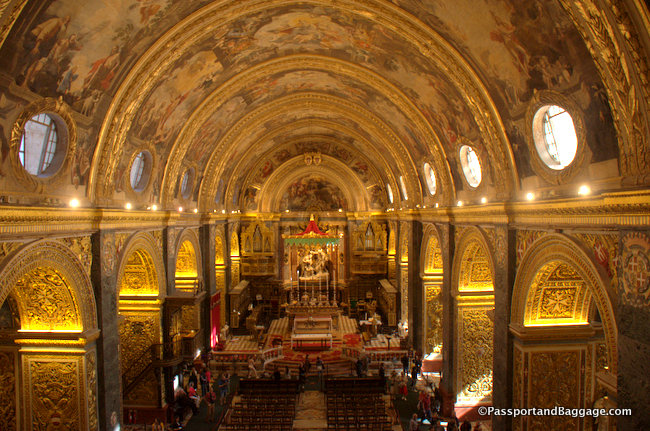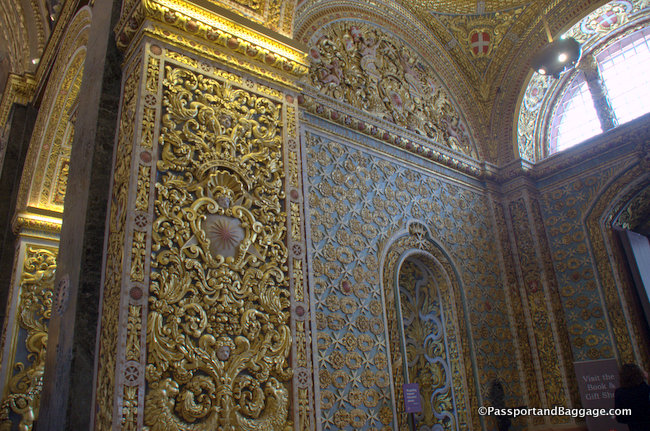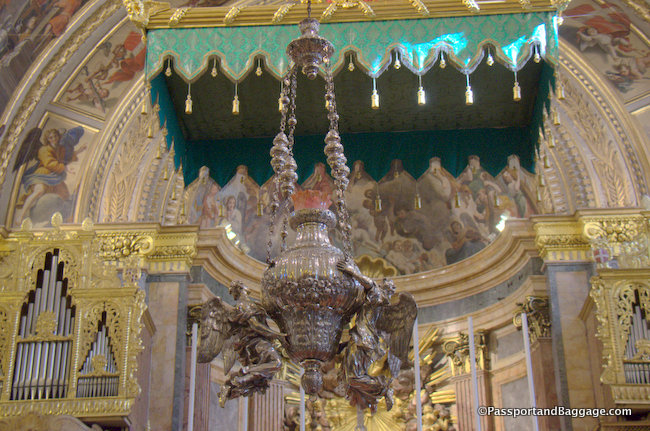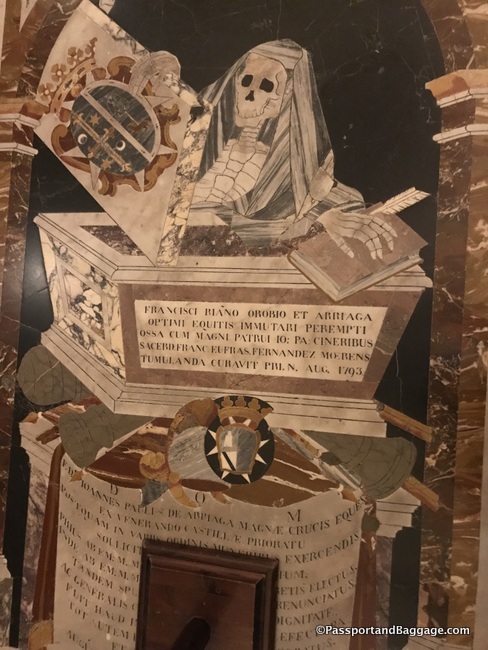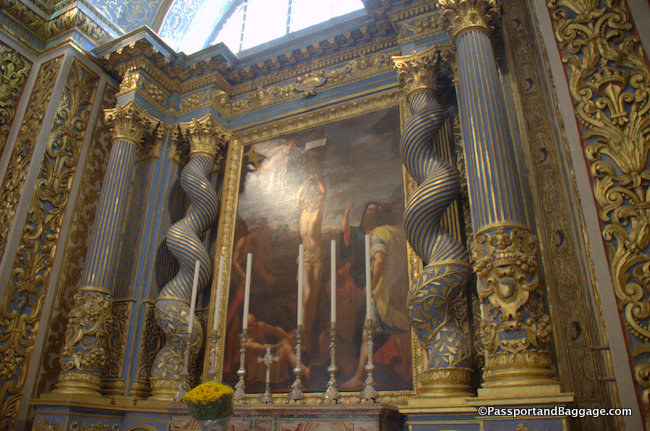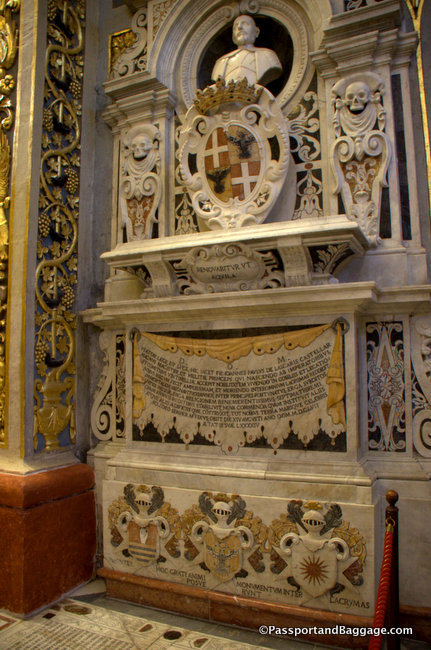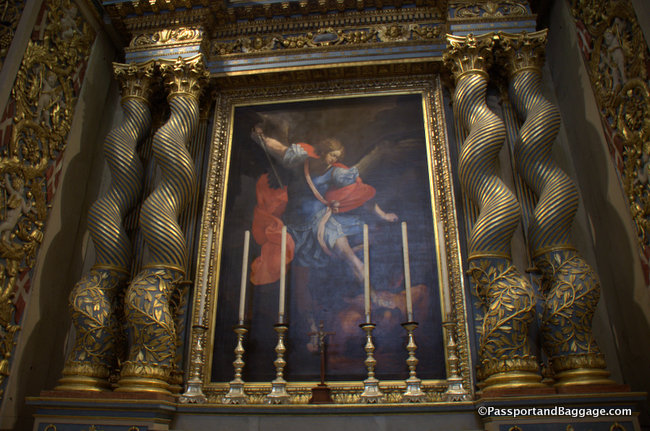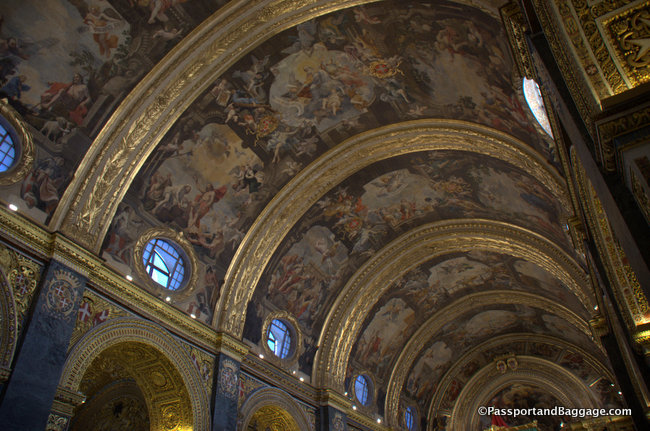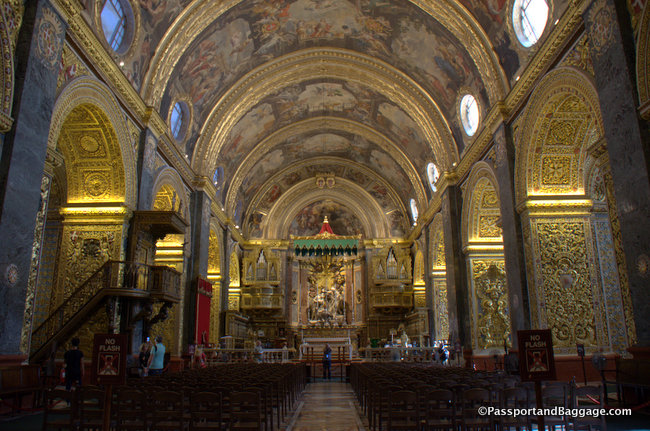Valetta, Malta
November 8, 2019
Recognized as one of the most incredible examples of the high baroque style, Saint Johns Co-Cathedral defies explanation. The exterior is so plain as to be mistaken for any other building in the neighborhood, and then you step inside.
St John’s was commissioned in 1572 and built by the Knights of Malta between 1573 and 1578. It was commissioned by Grand Master Jean de la Cassière as the conventual church of the Order of the Knights Hospitaller of St John, known as the Knights of Malta. The Church was designed by the Maltese military architect Glormu (Girolamo) Cassar who designed several of the more prominent buildings in Valletta.
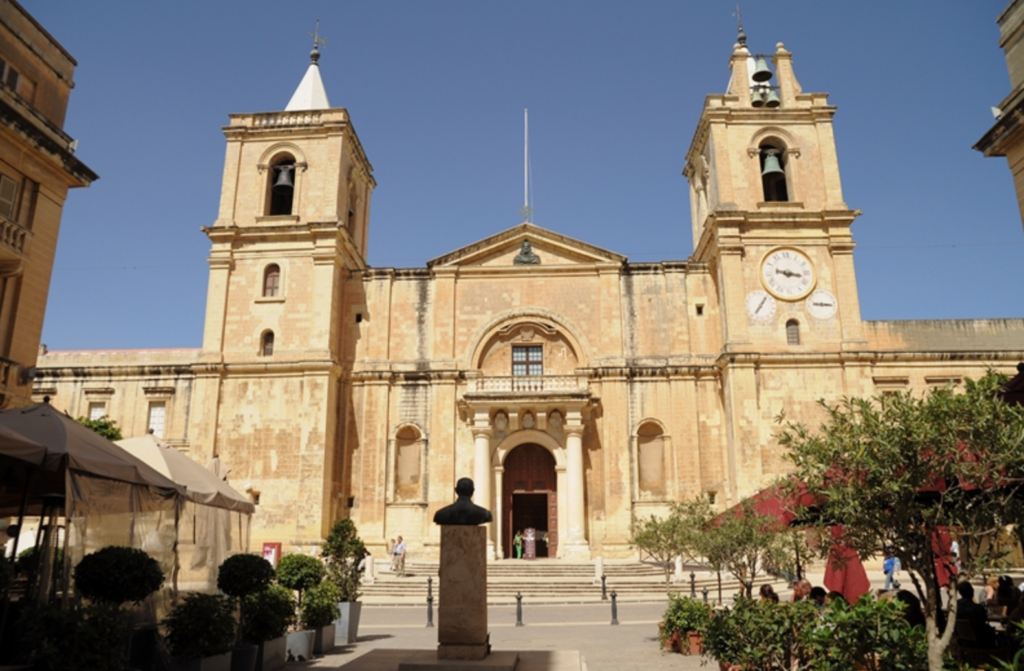 For the first century of its existence, the church’s interior was modestly decorated. In the 1660s, Grand Master Raphael Cotoner ordered the redecoration of the interior to rival the churches of Rome. This new interior was largely decorated by Mattia Preti, a Calabrian artist, and Knight. Preti designed the intricately carved stone walls and painted the vaulted ceiling and side altars with scenes from the life of St John. The carving was all undertaken in-situ rather than being carved independently. The Cathedral is built of Maltese limestone that uniquely lends itself to such intricate carving.
For the first century of its existence, the church’s interior was modestly decorated. In the 1660s, Grand Master Raphael Cotoner ordered the redecoration of the interior to rival the churches of Rome. This new interior was largely decorated by Mattia Preti, a Calabrian artist, and Knight. Preti designed the intricately carved stone walls and painted the vaulted ceiling and side altars with scenes from the life of St John. The carving was all undertaken in-situ rather than being carved independently. The Cathedral is built of Maltese limestone that uniquely lends itself to such intricate carving.
In 1666, a project for the main altar by Malta’s greatest sculptor, Melchiorre Gafà, was approved and begun. Gafà intended a large sculpture group in bronze depicting the Baptism of Christ. Sadly Gafa was killed in a Roman foundry accident while working on the installation forcing the church to abandon their plans.
 In 1703, Giuseppe Mazzuoli, Gafà’s only pupil, finished a marble group of the Baptism of Christ which might have been influenced by his master’s undocumented designs.
In 1703, Giuseppe Mazzuoli, Gafà’s only pupil, finished a marble group of the Baptism of Christ which might have been influenced by his master’s undocumented designs.
The whole marble floor is an entire series of tombs, housing about 375 Knights and officers of the order.
*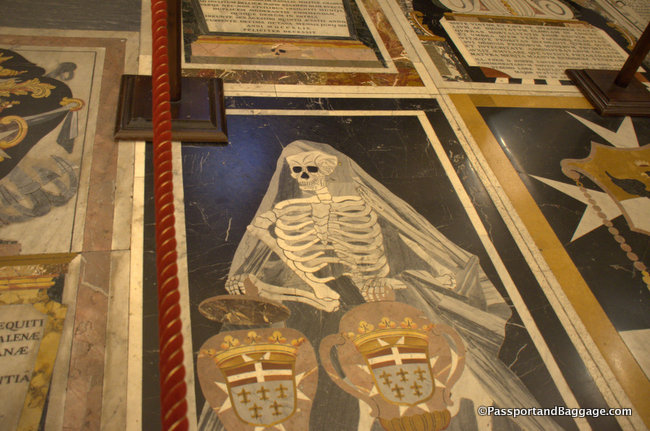 There is also a crypt containing the tombs of such Grandmasters as Philippe Villiers de L’Isle-Adam, Claude de la Sengle, Jean Parisot de Valette, and Alof de Wignacourt. The gravestones, all in marble, show the knights and grand-masters that are buried in this cathedral. On the top of each column is a plain white cross on a red background as, when the Order was formed, it adopted the Benedictine habit, which is a white cross on a red background – the cross of peace on the blood-stained fields of war. The eight-pointed cross, now known as the Maltese cross, came much later. Some historians say that the eight points signify the eight langues (languages) from where the Knights of St John came, while other historians say that, being a Religious Order, the four triangles are the four virtues and the eight points are the beatitudes coming out of the four virtues.
There is also a crypt containing the tombs of such Grandmasters as Philippe Villiers de L’Isle-Adam, Claude de la Sengle, Jean Parisot de Valette, and Alof de Wignacourt. The gravestones, all in marble, show the knights and grand-masters that are buried in this cathedral. On the top of each column is a plain white cross on a red background as, when the Order was formed, it adopted the Benedictine habit, which is a white cross on a red background – the cross of peace on the blood-stained fields of war. The eight-pointed cross, now known as the Maltese cross, came much later. Some historians say that the eight points signify the eight langues (languages) from where the Knights of St John came, while other historians say that, being a Religious Order, the four triangles are the four virtues and the eight points are the beatitudes coming out of the four virtues.
 St John’s Co-Cathedral has nine chapels – four on the right and five on the left. These include:
St John’s Co-Cathedral has nine chapels – four on the right and five on the left. These include:
- Chapel of Our Lady of Philermos,
- Chapel of the Langue of Auvergne
- Chapel of the Langue of Aragon
- Chapel of the Langue of Castile, Leon and Portugal
- Chapel of the Anglo-Bavarian Langue,
- Chapel of the Langue of Provence
- Chapel of the Langue of France
- Chapel of the Langue of Italy
- Chapel of the Langue of Germany
The oratory contains two paintings by Michelangelo Merisi da Caravaggio, and they are discussed in another post.
St John’s was raised to a status equal to that of St Paul’s Cathedral in Mdina – the official seat of the Archbishop of Malta – by a papal decree in 1816, hence the term ‘co-cathedral’.
*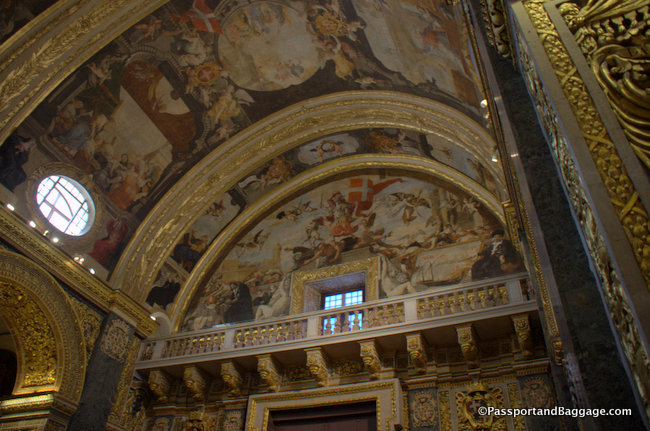 *
*
